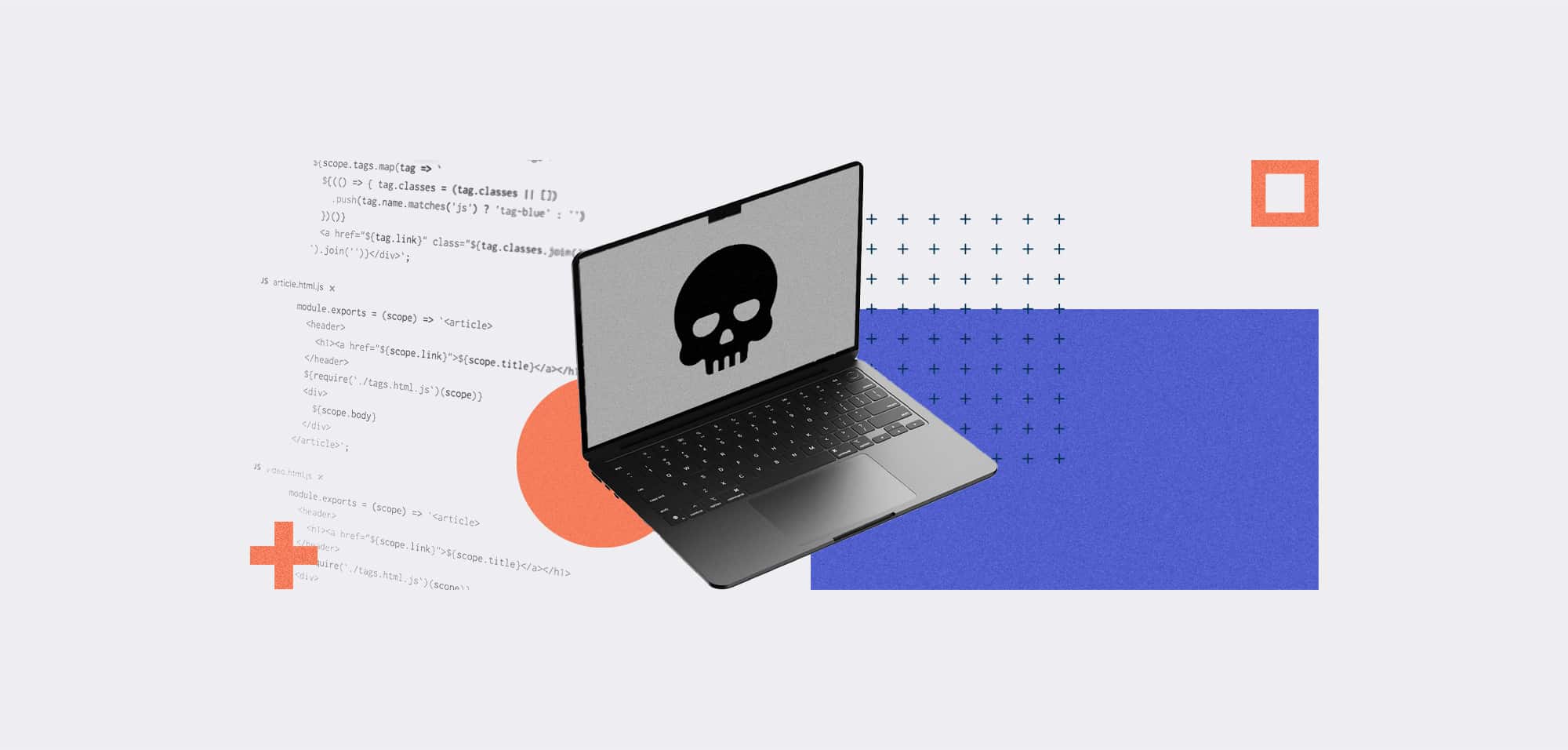
Your 10-Step Roadmap to a Robust ISMS
Table Of Contents:
- 1) 1. Choose Your ISMS Framework
- 2) 2. Develop Your Risk Management Plan
- 3) 3. Define Your Information Security Policies and Procedures
- 4) 4. Implement Access Control and Authentication Processes
- 5) 5. Protect Against Network and Web-Based Threats
- 6) 6. Ensure Data Backup and Recovery
- 7) 7. Implement Physical Security Measures
- 8) 8. Conduct Employee Security Awareness Training
- 9) 9. Monitor and Review Your ISMS
- 10) 10. Continuously Improve Your ISMS
- 11) Strengthen Your Information Security Today
Implementing an information security management system (ISMS) is vital to protecting your organisation’s data. Data breaches—and the costs associated with them—are rising, and the threat landscape is evolving as new AI-driven cyber threats develop. An effective ISMS helps a business maintain the confidentiality, integrity, and availability (CIA) of its data while also ensuring compliance with relevant laws and regulations.
In this guide, we share ten key steps to building a robust ISMS. Gain actionable tips and expert advice on implementing each step to boost your organisation’s information security and protect your data.
1. Choose Your ISMS Framework
An ISMS provides a framework for identifying, assessing, and managing information security risks and taking actions to mitigate them. There are several recognised ISMS frameworks, providing a set of guidelines and requirements for implementing an ISMS.
ISO 27001 ISMS framework: This globally recognised framework provides a set of best practices for information security management. The framework covers all aspects of information security, including:
- Risk management
- Access control
- Network and web-based security
- Data backup and recovery
- Physical security
- Employee training and education
- Monitoring and review.
NIST CSF ISMS framework: This framework was developed by the National Institute of Standards and Technology (NIST) and provides guidelines for information security management for U.S. government organisations. It covers various controls, including:
- Access control
- Incident response
- Cryptography
- Security assessment
- Authorisation.
These frameworks provide your business with guidelines for implementing an effective ISMS, helping to ensure the CIA of your sensitive information.
2. Develop Your Risk Management Plan
How you choose to manage risk is a core component of your organisation’s ISMS. Organisations must identify and assess potential risks to their information assets and develop a plan to treat, transfer, terminate or tolerate them based on severity. Your organisation should:
Determine the scope of your ISMS: Your ISMS scope should define the information assets you intend to protect.
Define your risk management methodology: Your chosen methodology should take a systematic approach consistent with your information security strategy. The process should include risk identification, assessment, mitigation, and monitoring.
Identify and assess risks: When you’ve selected your methodology, the first step in the risk management process is to identify potential threats to your business’s information assets and evaluate the likelihood and impact of each threat.
Prioritise and rank risks: Once you’ve identified and assessed risks, you should prioritise and rank them based on their severity level. This will help your organisation focus resources appropriately and develop risk mitigation and incident response plans.
Develop risk mitigation and response plans: Your risk mitigation plans should include measures, such as policies, procedures and controls, to reduce the likelihood and impact of risks. Incident response plans should outline the steps your organisation will take should a security incident occur.
Monitor results: An organisation’s risk management plan should be regularly updated and improved. This helps you ensure that it remains effective.
3. Define Your Information Security Policies and Procedures
Your information security policies define your organisation’s steps to protect its information assets. Procedures provide the steps employees should follow to ensure your policies are implemented and effective.
Key steps for defining your organisation’s policies and procedures include:
Review existing policies and procedures: By reviewing existing documentation, you can ensure any existing policies and procedures are still relevant to your business and practical to implement.
Identify relevant information security requirements: Organisations must secure their information according to stringent regulatory and legal requirements, which are often based on their geography or sector.
Develop your policies and procedures: When developing the policies and procedures required to protect your organisation’s information, consider the scope of your ISMS, your existing documentation review, and any identified information security requirements.
Communicate policies and procedures internally and train employees: Share policies and procedures with staff and stakeholders. Investing in information security training also ensures everyone in the business is aware of their information security roles and responsibilities.
Regularly review and update your policies and procedures: Continuous improvement is a cornerstone of an ISO 27001-compliant ISMS. Regularly reviewing your policies and procedures ensures your organisation is addressing risks as they arise.
4. Implement Access Control and Authentication Processes
Access control and authentication processes ensure that only authorised individuals can access your organisation’s sensitive information and systems and verify user identities.
Steps for implementing access control and authentication processes include:
Develop an access control policy: Your access control policy should outline the principles and rules for controlling access to information assets. It should also specify who is authorised to access information assets and the circumstances in which access is granted.
Select authentication tools: Based on the information assets and users being protected, you should leverage appropriate authentication tools. Common authentication mechanisms include passwords, smart cards, biometrics, and two-factor authentication.
Implement access control systems: Access control systems should be implemented to enforce the access control policy. These systems include technical solutions like firewalls and intrusion detection systems and administrative solutions, such as access controls and permissions based on an employee’s role.
Test and evaluate: Regular testing is vital to ensure your access control and authentication methods are working as expected. This can include penetration testing, security audits, and user acceptance testing.
Continuously monitor and improve: Access control and authentication mechanisms should be monitored and improved to ensure they effectively protect information assets. For example, you can review and update your organisation’s access control policy and establish new authentication methods as needed.
5. Protect Against Network and Web-Based Threats
Regular software updates and the implementation of security solutions, such as firewalls, can help mitigate threats like viruses, malware, and hacking attempts.
Firewalls: A firewall acts as a barrier between your organisation’s internal and external networks and only allows authorised traffic to pass through. Firewalls can be hardware- or software-based and can be configured to block specific types of traffic.
Anti-virus and anti-malware software: Anti-virus and anti-malware software can detect and remove malware before infecting your network or computer.
Software updates: Keeping your organisation’s software up-to-date ensures you are protected against newly discovered vulnerabilities attackers may attempt to exploit.
HTTPS encryption: HTTPS encryption protects the confidentiality and integrity of data passed between a web client and a server. It’s crucial to enable HTTPS encryption on all web-based applications, especially those that involve sensitive information, such as passwords or payment information.
Monitor logs: Logs can provide valuable information about potential security incidents, including unauthorised access attempts, and help you quickly respond to threats.
6. Ensure Data Backup and Recovery
Your organisation should have a well-defined backup and recovery plan to ensure that you can restore critical information in the event of data loss.
Regular data backups: To minimise data loss in the event of an incident, your organisation should back up data at daily or weekly intervals, Regular data backups are critical in ensuring data can be recovered should an incident occur.
Store backups offsite: Storing your data backups in a different location helps to protect against data loss in the event of a physical disaster, such as a fire or flood. Consider storing your backups in a secure location like a cloud-based data centre or on physical media that can be stored offsite.
Test backup and recovery procedures: Regularly testing backup and recovery procedures involves restoring data from backups to a test environment and verifying that the data can be accessed and used. This helps to ensure data can be recovered during a disaster.
Document backup and recovery procedures: Documenting backup and recovery procedures ensures each process is repeatable and reliable. Your documentation should include the frequency, type, location, and processes for restoring data from backups.
Choosing a backup solution: When choosing a backup solution, consider factors such as cost, scalability, reliability, and ease of use.
Encrypt backups: Encrypting backups helps your organisation protect against data theft and unauthorised access.
Monitor backup and recovery performance: Monitoring backup and recovery performance ensures that backups and recovery perform as expected. Performance metrics such as backup size, backup time, and restore time should be reported regularly.
7. Implement Physical Security Measures
Physical security measures, such as server rooms and access control systems, protect your organisation’s sensitive information from theft or damage.
Control access to physical premises: Physical offices or sites should be only accessible to authorised personnel. Consider implementing physical access controls, such as security cameras, key card systems, and biometric authentication.
Securely store sensitive equipment: Sensitive equipment, such as servers, should be stored in secure locations, such as data centres, to protect against theft and unauthorised access.
Secure data centres: Your data centres should be secured against physical and environmental threats like fires and theft. This can be achieved with measures like fire suppression systems, uninterruptible power supplies, and physical security measures.
Implement environmental controls: Consider implementing environmental controls, such as temperature and humidity control, in data centres to ensure that equipment is protected from heat and moisture.
Regularly inspect physical premises: Undertake regular inspections of physical premises, including data centres and equipment rooms. This will detect physical security vulnerabilities and ensure that physical security measures are functioning as required.
Conduct background checks: Conducting background checks on personnel with access to sensitive equipment and data prevents unauthorised access and protects against insider threats.
8. Conduct Employee Security Awareness Training
Employee training and education help drive the success of your ISMS. Your organisation should provide security awareness training to ensure employees understand the importance of information security, how to protect sensitive information, and their own information security responsibilities.
Provide regular security awareness training: Employee security awareness training should be conducted regularly, such as annually or biannually, to ensure employees’ knowledge is up to date.
Customise training for different roles: The training you provide should be customised for different roles within your organisation. For example, training for administrators may be more technical, while training for non-technical employees may focus more on safe computing practices and avoiding phishing scams.
Use interactive and engaging methods: Your security awareness training should be interactive and engaging to keep employees interested and motivated. Respondents to our State of Information Security Report shared that learning management platforms (35%), external training providers (32%) and gamification of training and awareness (28%) were the most effective methods of improving employee skills and awareness.
Measure the effectiveness of training: Track the impact of your security awareness training by measuring its effectiveness through pre-and post-training assessments, employee feedback, and incident tracking.
9. Monitor and Review Your ISMS
Monitoring and reviewing your business’s ISMS ensures its effectiveness and continuous improvement.
Establish a monitoring and review plan: Your plan should outline the frequency of monitoring and review, the methods used, and the responsibilities of key personnel.
Conduct regular internal audits: Internal audits enable you to identify potential areas for improvement and ensure that your ISMS functions as required.
Review security incidents: Use your incident response procedure to examine incidents, determine the root cause, and identify remedial actions. You should also evaluate the effectiveness of your security controls regularly to ensure that they function as intended and provide the desired level of protection.
Monitor security trends: This information can be used to identify areas for improvement in the ISMS, inform your employee training and education, and ensure that your ISMS is keeping pace with the current security landscape.
Engage stakeholders: Stakeholder feedback can help ensure the ISMS meets the organisation’s needs.
Update your ISMS: You should regularly update your ISMS to ensure that it is current and relevant. This may include updating security controls, policies and procedures, and your risk management framework.
10. Continuously Improve Your ISMS
For an ISMS to comply with the ISO 27001 standard, evidence of continuous improvement is required. Whether you choose to attempt certification or simply use the framework as a guide to improving your information security posture, you should assess your information security frequently and make updates and improvements to your ISMS as needed.
When implemented correctly, an ISMS can help drive your organisation’s security culture and provide the foundations needed to align with information security best practices and sustainable business growth.
Strengthen Your Information Security Today
By following the roadmap outlined in this guide, your organisation can implement a robust, effective ISMS to protect your information assets and ensure your data’s confidentiality, integrity, and availability.
The ISMS.online platform enables a simple, secure and sustainable approach to information security and data privacy with over 100 supported frameworks and standards. Ready to simplify your compliance and secure your data? Book your demo.




